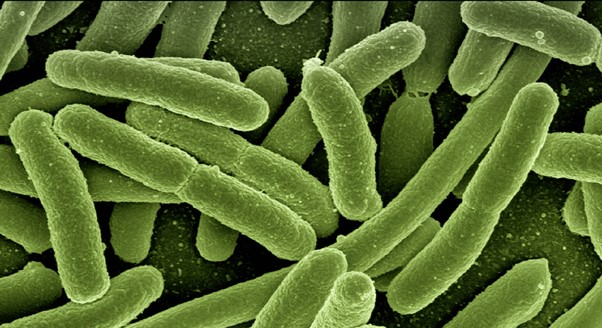Gut microbiomes and gut health

The gut microbiome plays an important role in human health and disease. Much of what we eat cannot be immediately broken down by the body, and these undigested dietary compounds end up in the colon, where they are metabolized by the trillions of microbes that inhabit our gut. Here, they provide us with important metabolites and vitamins and influence our hormonal and immune systems. However, poor dietary habits and various environmental factors can negatively impact the gut microbiome, leading to dysbiosis and increasing the risk of developing a range of diseases.
Understanding the gut microbiome is essential to understand the influence (good or bad) our food has on human health and disease. The microbes in our gut are essential for digesting a good chunk of the food we eat, as well as being important for the "education" of our immune system, protecting us from disease-causing microorganisms, produce different vitamins and convert components from our diet into bioactive substances.
During the two last decades scientific interest in the gut microbiome has vastly increased since it was found that imbalance (dysbiosis) in the gut microbiome is implicated in numerous diseases such as obesity, metabolic syndrome, type-2 diabetes, type-1 diabetes and inflammatory bowel disease and many more.
Without understanding the gut microbiome and its function, we will lack an in-depth understanding of how food affects humans. In other words, if we want to understand the impact it has on us humans when we put a meal together, we need to know what the intestinal microbiome means for health and disease.
Research themes
When the microbes in our gut metabolise our food (or at least the part of our food not already digested and absorbed in the upper gastrointestinal tract) a wide range of metabolites are formed. One prominent example are the short-chain fatty acids, namely acetate, propionate and butyrate which all play essential roles in our health. For example, propionate is involved in our sense of satiety, i.e. when the intestinal microbiome produces a lot of propionate, then through various receptors and immune signaling, we will feel satiety for longer. Butyrate acts as nourishment for our epithelial cells, so if the micro-organisms in one's gut produce a lot of butyrate, the epithelial cell layer is more "dense", and there is better control over which substances move from the gut to the bloodstream. Acetate is absorbed through the epithelial cell layer into the bloodstream and typically covers about 10% of our daily energy needs. Both acetate, propionate and butyrate are produced by our gut microbes, primarily from indigestible carbohydrates from our diet, for example, plant fibres.
Bacteriophages are viruses that attack bacteria. Largely we have as many bacteriophages in our intestines as we have bacteria, and they are quite specific in the sense that a bacteriophage only attacks a small specific group of bacteria. These bacteriophages can be extracted, characterised and used to manipulate the gut microbiome. In other words, mixtures of bacteriophages can be used to "push" composition of the microbiome and thus influence host phenotype. We have shown in animal studies that if we put mice on a high-fat diet and give them bacteriophages from mice fed a low-fat diet, then the mice do not develop metabolic syndrome, a pre-stage to type-2 diabetes, which they normally would on a high-fat diet for a long time. We are also involved in clinical intervention studies investigating the use of complex bacteriophage communities to treat Clostridoides difficile (Cdiff) infection and preventing necrotizing enterocolitis in preterm infants.
Probiotics are defined as live micro-organisms that when ingested in adequate amounts confer a health benefit for the host. A challenge, with respect to many types of probiotics, is to ensure the survival of probiotics before ingestion and during the passage of the upper part of the gastrointestinal tract. As long as probiotics are stored very cold, they are quite stable, but as soon as the microorganisms are stored at room temperature - e.g. in a shop or in a food product, they will often die. After ingestion the probiotics have to pass the stomach, an environment characterized by low pH, which often kills them. It is, therefore, a challenge to maintain probiotics in a state, where they can reach the desired position in the body and exert the desired effect. At UCPH FOOD, we have worked with various food matrices, e.g. chocolate, where we have incorporated freeze-dried bacteria. It provides an extremely good shelf life of traditional types of probiotics such as various bifidobacteria and lactobacilli. The increased understanding of which micro-organisms characterise a healthy and stable intestinal microbiome has led to a great interest in developing so-called "next-generation probiotics". One challenge with these micro-organisms is that they typically do not tolerate oxygen. We have therefore developed techniques to encapsulate, e.g. the bacterium Akkermansia muciniphila in chocolate. Among other things, type-2 diabetes patients often have a fairly low level of Akkermansia muciniphila,, and this bacterium is important for sealing the intestinal barrier. The good thing about chocolate is that there is very low water activity, and the bacterium remains inactive. In the stomach, the chocolate fat protects the bacterium from the low pH environment, allowing the bacterium to reach the site of action (the small intestine or colon) in a viable state. And also,it is very easy to get people to eat chocolate.
The composition of the gut microbiome is extremely complex. Furthermore, it is very expensive to carry out studies in humans, and although animal models provide many possibilities, the use of experimental animals should be limited as much as possible, so that we only use them for studies where there is no other option. We have therefore developed artificial models (in vitro models) of both the stomach/small intestine and colon. These models can be used to study, e.g. survival of probiotics, examine the effect of different dietary components on the composition of the gut microbiome, or study interactions between disease-causing microorganisms and, for example, bacteriophages.
Contact
 Dennis Sandris Nielsen
Dennis Sandris Nielsen
Professor
dn@food.ku.dk
 Morten Arendt Rasmussen
Morten Arendt Rasmussen
Professor
mortenr@food.ku.dk

Torben Sølbeck Rasmussen
Assistant Professor
torben@food.ku.dk

Lene Jespersen
Professor
lj@food.ku.dk

Ling Deng
Associate Professor
lingdeng@food.ku.dk

Kenneth Klingenberg Barfod
Associate Professor
kenneth.barfod@food.ku.dk
